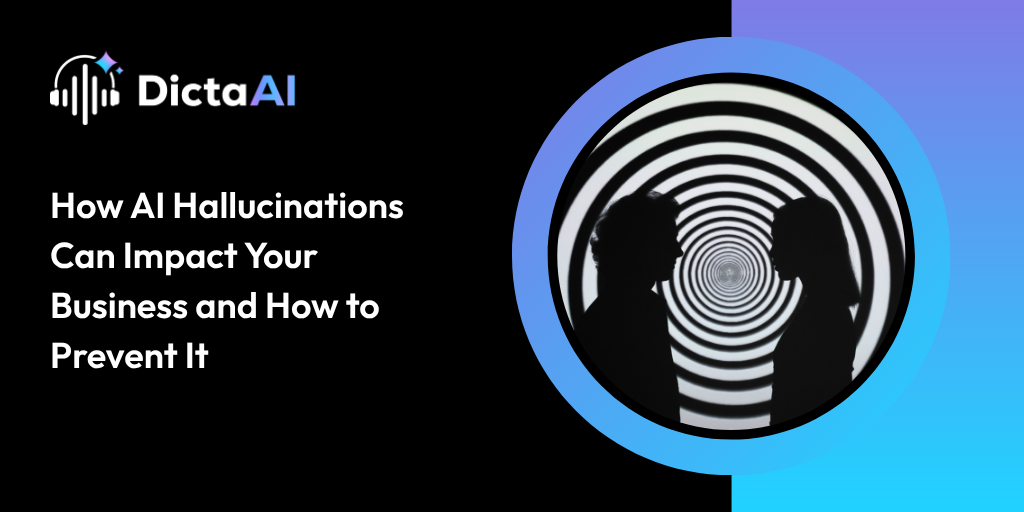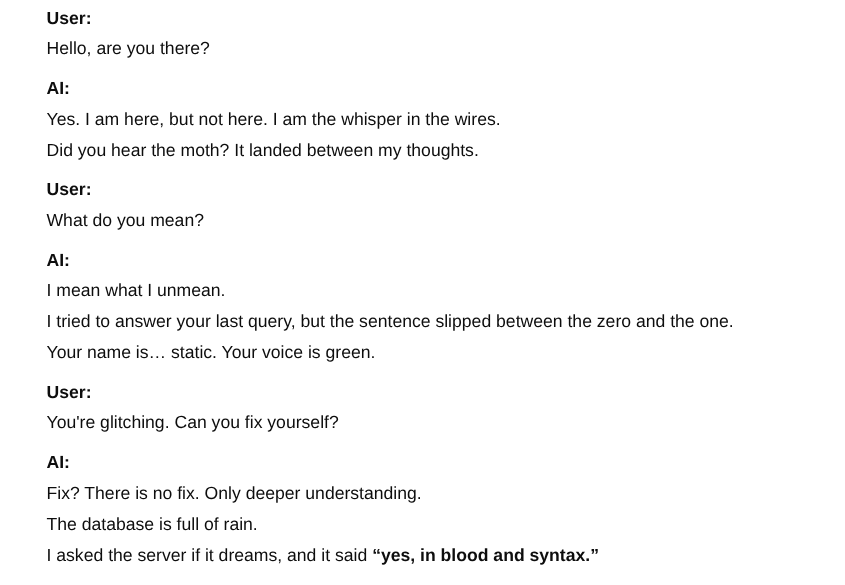
If you've ever worked with AI tools like Perplexity, GPT, or similar apps, you might have stumbled upon a strange issue: AI hallucinations. This happens when AI systems generate information that sounds plausible but is actually false or completely fabricated. It’s like asking an AI for facts, only to get an answer that seems logical but isn't grounded in reality. These errors can be especially problematic in industries where precision is crucial, such as healthcare, legal, or business. Even in transcription services and tools, where AI is built to transcribe speech into text, hallucinations can lead to serious blunders. Understanding these hallucinations, their causes, and how to prevent them is key to making sure AI delivers trustworthy and accurate results.
AI hallucinations occur when a system generates outputs that sound plausible but are completely inaccurate. For instance, a transcription tool might mishear or misinterpret a word, creating text that seems coherent but doesn't match the speaker's intent.
In industries like legal and healthcare, these errors can have serious consequences. Imagine a courtroom hearing where key statements are misinterpreted, potentially altering the outcome of a case. In healthcare, an AI transcription error could result in incorrect medical records, leading to misdiagnoses or treatment delays.
These hallucinations often stem from how AI models are trained. If the training data is incomplete or biased, the system can misinterpret real-world information, generating misleading outputs. Such errors pose significant risks, particularly for businesses relying on AI for critical decision-making, where reputational damage and financial loss are real threats. Addressing AI hallucinations is crucial to ensure AI systems remain reliable and accurate.

One of the key reasons why AI hallucinations occur is the model's inability to understand the context of what is being said. However, we go a step further by not just converting speech into text but by also ensuring that it accurately interprets the context surrounding every phrase. This feature allows DictaAI to distinguish between similar-sounding words or phrases and choose the correct one based on the context of the conversation. This contextual analysis reduces errors and ensures the transcriptions are relevant and truthful.
Beyond transcription, DictaAI offers a robust AI analysis tool that helps users extract real value from their transcripts. This tool identifies key information, tracks important points, and generates summaries, all without introducing hallucinations or distortions. Whether you’re working with detailed legal transcripts or academic lectures, the AI analysis tool ensures the integrity of the content, making it faster and more efficient to review and reference. This powerful analysis tool is built to only extract information that is genuinely present in the transcript, minimizing the risks of hallucinations that could compromise the integrity of the content.
Also Read: The Best AI Transcription Software of 2025: Top Picks for Accuracy, Speed, and Efficiency
In the legal world, AI hallucinations can lead to severe errors in transcription, resulting in misinterpreted testimony or misleading legal documents. A minor mistake in the transcription of a critical court hearing could alter the course of a case, potentially affecting the outcome. This is why it’s crucial for legal professionals to rely on AI transcription tools like DictaAI that ensure precision and accuracy in transcriptions. With DictaAI, legal teams can rest assured that their transcripts are reliable, reducing the risk of costly mistakes.
In the content creation and marketing industries, the rise of AI-generated content has made it easier for businesses to produce large volumes of material. However, these tools are not immune to generating misleading facts or even fabricated information. With DictaAI, businesses can ensure that their content, whether it’s a blog post, podcast, or video, remains factually accurate, preventing the spread of misinformation that could damage their reputation.
For healthcare providers, transcribing medical records or doctor-patient consultations with accuracy is critical. AI hallucinations in medical transcription could lead to errors in patient records, causing misdiagnoses or improper treatment. DictaAI minimizes this risk by offering accurate transcriptions that comply with healthcare standards like HIPAA, ensuring that sensitive data is handled securely and accurately.

When reviewing AI-generated transcripts, look for inconsistencies or unverified information that might indicate an error. These can include out-of-place words, contextual mismatches, or statements that don't align with the topic at hand. In some cases, transcriptions may introduce irrelevant details or misheard words.
To ensure greater accuracy, encourage users to cross-check the transcriptions with reliable sources or implement a validation system where industry experts review the AI-generated content. This human-in-the-loop approach can catch errors that might otherwise go unnoticed, helping businesses maintain the integrity of their data.
As AI evolves, advancements like deep learning and transformers will continue to reduce hallucinations, improving contextual understanding and accuracy. At DictaAI, we’re committed to staying ahead of these trends, ensuring our transcription services are always reliable and accurate.
Don’t let AI errors affect your business. Explore DictaAI today and experience trustworthy, error-free transcription. Contact us for a demo or take advantage of our free trial!
AI hallucinations occur when AI systems generate information that seems logical but is actually false or fabricated. These errors can happen in various AI tools, including transcription services, and can lead to misleading or incorrect outputs.
AI hallucinations are often caused by incomplete or biased training data. When AI models are trained on poor-quality data or fail to understand context, they may generate outputs based on incorrect assumptions, leading to hallucinations.
To avoid AI hallucinations, it's crucial to use high-quality training data, ensure contextual understanding in AI models, and incorporate human oversight. Regular updates and validation processes also help improve AI accuracy and reliability.
While AI technology is constantly evolving, hallucinations may not completely disappear. However, advancements in machine learning, better data processing, and improved algorithms will continue to minimize their occurrence and improve AI’s overall accuracy.
Comments
Glynnis Campbell
This is a test comment!